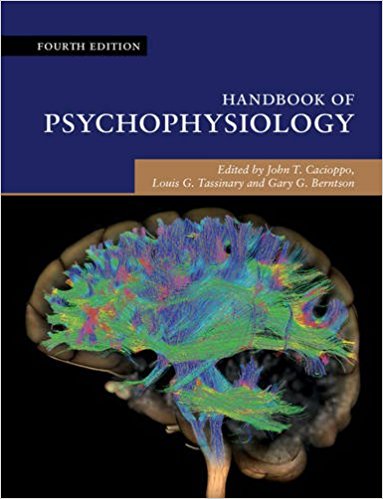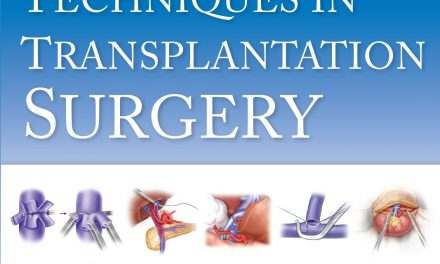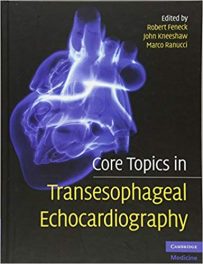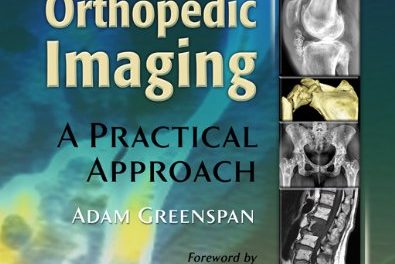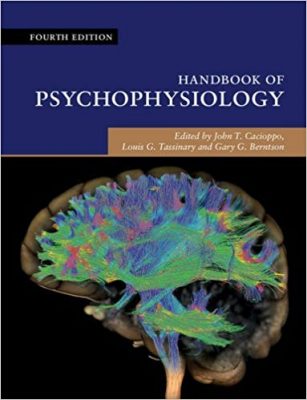 Editors: John T. Cacioppo, Louis G. Tassinary, and Gary G. Berntson
Editors: John T. Cacioppo, Louis G. Tassinary, and Gary G. Berntson
Publisher: Cambridge University Press – 715 pages
Book Review by: Nano Khilnani
This is the fourth – 2017 – edition of this book, which was first published 45 years ago in 1972. As in that initial text, the emphasis and focus was on the peripheral nervous system (PNS). But with powerful and new probes of the central nervous system with advanced brain imaging techniques, the field of psychophysiology has changed dramatically since the publication of the first edition, the editors – John T. Cacioppo, Louis G. Tassinary, and Gary G. Berntson – point out in their initial chapter.
The current focus is on investigating how the CNS and other parts of the human brain influence behavior, and investigations of elementary physiological events in normal thinking, feeling, and interactions between individuals are now commonplace. The editors write: “new techniques are providing additional windows through the neural events underlying psychological processes can be viewed unobtrusively,” with advanced technology.
The instruments now available make it possible to selectively activate parts of the brain and see what happens with different types of stimulation. It is now also possible to temporarily disable a region of the brain to study its role in cognitive operations. For example, observations of patients with lesions now enable investigators to define the precise type of lesion and the kind of behavior that leads to.
Seventy-four specialists in areas related to psychology, physiology and allied fields, located mainly in the United States and Europe, authored the 31 chapters of this extensive book. We list the titles of the chapters below to provide you a broad overview of the coverage of the topics:
Foundations
- Strong Inference in Psychophysiological Science
- A Neuroscience Framework for Psychophysiology
- Neuropsychology
Systemic Psychophysiology
- Fundamentals of Functional Neuroimaging
- Electroencephalography and Event-Related Brain Potentials
- High-Performance Electrophysiological Microsegmentation and Brain Psychophysiology
- Application of Non-Invasive Brain Stimulation in Psychophysiology
- The Somatic System
- Cardiovascular Psychophysiology
- The Electrodermal System
- The Respiratory System
- Gastrointestinal System
- Sexual Response
- Ambulatory and Non-Contact Recording Methods
- Behavior Genetics: From Heritability to Gene Finding
- Functional Genomic Approaches to Psychophysiology
- Psychoneuoroimmunology
Topical Psychophysiology
- From Homeostasis to Allodynamic Regulation
- The Interoceptive System: Implications for Cognition, Emotion, and Health
- Emotion
- Stress Hormones in Psychophysiological Research: Emotional, Behavioral, and Cognitive Implications
- Developmental Processes
- Language
- Behavioral Medicine and Psychophysiology
- Psychophysiology in Pursuit of Psychopathology
- Detection Deception
General Methods
- Methodology
- Psychometrics
- Biosignal Processing in Psychophysiology: Principles and Current Developments
- Multilevel Modeling
- Visualizing Scientific Data
As you read through this book, you will discover that the following advancements and instrumentation have now made it possible to measure endocrinological, immunological, and physiological responses of humans in natural and laboratory settings:
- Developments in blood and tissue assays
- Developments in behavioral genetics, epigenetics, and molecular biology,
- DNA genotyping
- Minimally-invasive and non-invasive procedures
- New ambulatory recording devices
- Non-contact recording instruments
- Powerful mobile computing devices
The developments and devices mentioned above has enabled the gathering of important pieces of knowledge, specific data, and statistical information, including but not limited to:
- Behavioral and biological data
- Biometric and psychometric properties of the measures
- Principles of physiological mechanisms
- Statistical representation and analysis of multivariate data
- Structure of scientific inference
Most but not all chapters have these organizational elements, making it easier to read and understand the material covered:
- Introduction
- Discussion of topics and subtopics
- Charts
- Drawings
- Tables
- Conclusion
- References
This is a pioneering effort of the three editors of this text as well as the total 74 contributors in a field that seen rapid growth and advancement of knowledge about the human and animal brains in the last 25 years or so, with techniques such as cardiovascular assessments, electroencephalography, event-rela6ed brain potentials including scans, neuro-imaging techniques, and the like.
There is still much more to be learned about how the brain works, but this book reveals much that has been discovered in recent decades, and points to investigators the promising areas for further research to gain more knowledge and deeper understanding.
Editors:
John T. Cacioppo is the Tiffany and Margaret Blake Distinguished Service Professor and Director of the Center for Cognitive and Social Neuroscience at the University of Chicago. Cacioppo is the author of more than 500 scientific articles and 20 books.
Louis G. Tassinary is the John Only Geer Architectural Heritage Professor and Director of the Environmental Psychophysiology Laboratory at Texas A & M University. He has published in a wide variety of journals.
Gary G. Berntson is an Emeritus Academy Professor of Psychology at Ohio State University. He has published more than 200 peer-reviewed articles and has edited several books. He has served on numerous federal advisory committees (NIH and NSF, as well as the Department of Homeland Security and the Department of Defense).

